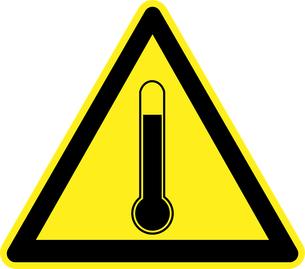This question has come in many forms:
Some people think it’s a typo or that we can’t convert from fahrenheit to centigrade.
Other people think that it’s something magical about being a commercial brewer.
Still others (especially those who live in areas where they can’t get our mead) assume that we’re sacrificing quality for turn-around time.
The truth is that over the years we have been systematically increasing our fermentation temperatures because it has been making better and better mead. The science behind it is a little complicated, but we’d better start off with a simple question: What is an off flavor?
It seems simple, right? An off flavor is a flavor in your beverage that you don’t want there.
Is a heavy phenolic component a good thing in a beer? Well, if it’s the right type of phenol for the style, absolutely. Phenols are what give Hefeweizens their distinctive banana and clove characteristics.
Phenols are also responsible for band-aid-like and medicinal characteristics. These you do not want.
What about grassy aromas? Lemon? Douglas Fir? Moss? All appropriate for IPAs.
Caprylic (goat-like) smells? Yes, there are even a few saisons where these are appropriate.
Making Craft Mead means taking a step back and asking yourself without any preconceived notions: What am I trying to make here? The answer can be very simple and straightforward: I’m trying to brew a beverage that my friends enjoy drinking.
Early on, we followed the general rules for brewing: Low and Slow makes clean meads. We fermented at around 68°F, and we got a beverage that was, well, flavorless.
If you’re brewing a hydromel (5% abv mead) with no adjuncts or other flavors and you’re fermenting at the low-end of your yeast’s tolerance, you are going to get something that a) takes forever to brew, b) tastes like slightly honey-flavored seltzer, and c) quite likely has a huge sulfur component.
Yes, you read that right. A slow fermentation may not be vigorous enough to purge the off-flavors from your mead. You can end up with residual hydrogen sulfide from a languid fermentation.
What about the off-flavors from fermenting so hot? First of all, 82°F is NOT that hot. It’s only a tiny bit above the Lalvin recommended range. (We’ll get to Psychopomp and Old Wayfarer in a minute.) Second, what do you mean by off flavors?
Many of the cool flavors from wildflower honey are similar to the aldehydes and phenols produced by D-47 and similar strains of yeast fermenting slightly above their traditional range. We specifically select our yeast strains in-house such that they will complement the honeys we use, not strip them of flavors or fight with them.
It should also be noted that many off-flavors are, in fact, secondary metabolites, which you can learn about in an article here, and they require certain compounds (primary constituents) to form which simply are not present in honey. Grain has lots and lots of different chemicals for yeast to play with, as does fruit, but honey is mostly sugar. This means that there are fewer potential off-flavors from hot fermentations. This leads us to Psychopomp and Old Wayfarer…
Since we’re shooting for a robust, phenolic profile in both of these fine meads, we have to push the envelope when it comes to fermentation temperatures just to get secondary metabolites at all. Yes, we do get some “eggy” aromas during fermentation (we constantly apologize to our neighbors), but these are easily dealt with through CO2 purging and degassing. This is why the recipes specifically require this step before kegging or bottling.
Also, little known fact, these flavors and aromas age-out. This is what we do with Mannaz: a very long aging process (which is why it’s not included in our craft mead recipes, although it is, technically, a craft mead).
Furthermore, unhealthy fermentations can happen anywhere on the thermometer. Pitching a sufficient amount of yeast and using adequate nutrient can be even more important than proper fermentation temperatures. You can learn about brewing when it’s cold in one of our earliest articles.
Now, remember, we have the ability to temperature control our bataches. There is a possibility that if you try to ferment as high as we do without the ability to bring the temperature down, the metabolic activity of the yeast will keep pushing the temperature higher and higher and either kill itself or make the mead taste a little… gamey. This, however, is true of everything you’ve ever fermented, not just mead.
So, there you have it. Without getting too deep into the science (which is incompletely understood anyway), that is why we ferment at slightly higher temperatures than you might be used to. Stop freaking out and go try it for yourselves.You know the worst thing that can happen? You have five gallons of a mead that you have to wait a while to drink.





